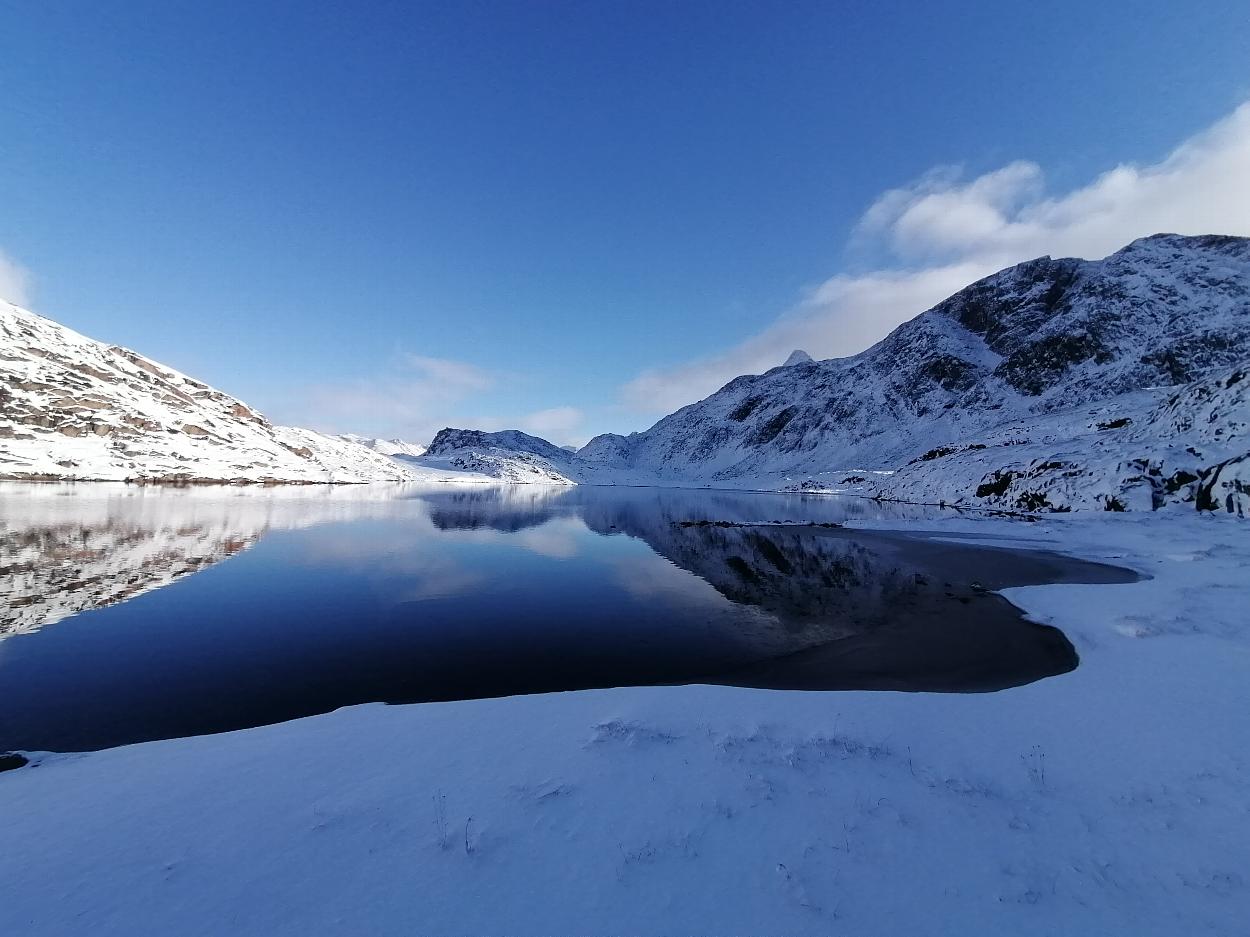

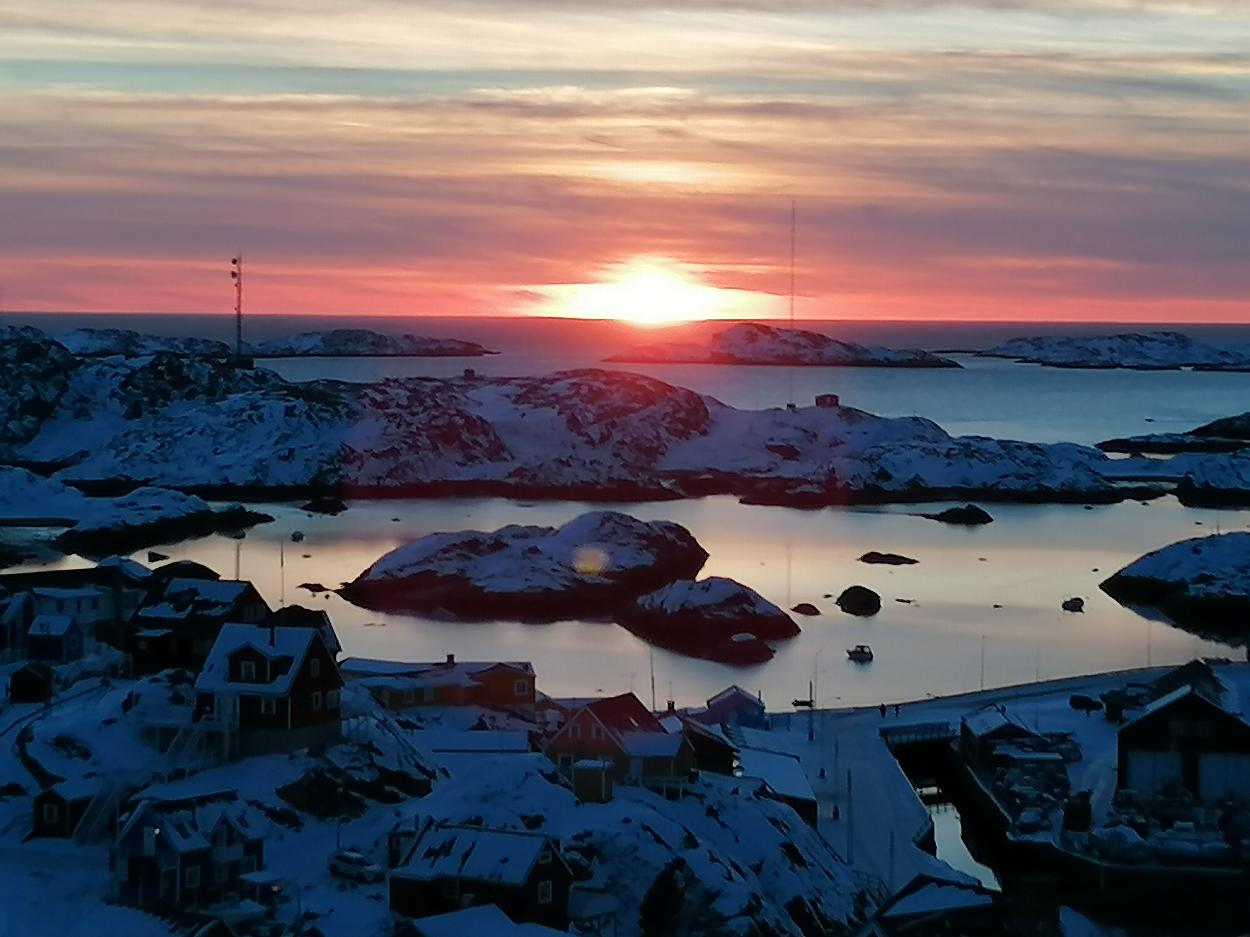




















"This morning I woke up well before sunrise. I went for a walk to enjoy dawn creeping up on the Arctic. The fresh snow crunched under my feet. The only sound piercing the silence was of sled dogs howling for freedom and adventures. You can hear their wolf ancestors in those blood-curdling howls! They want the sea to freeze over so dog-sledding season starts!"
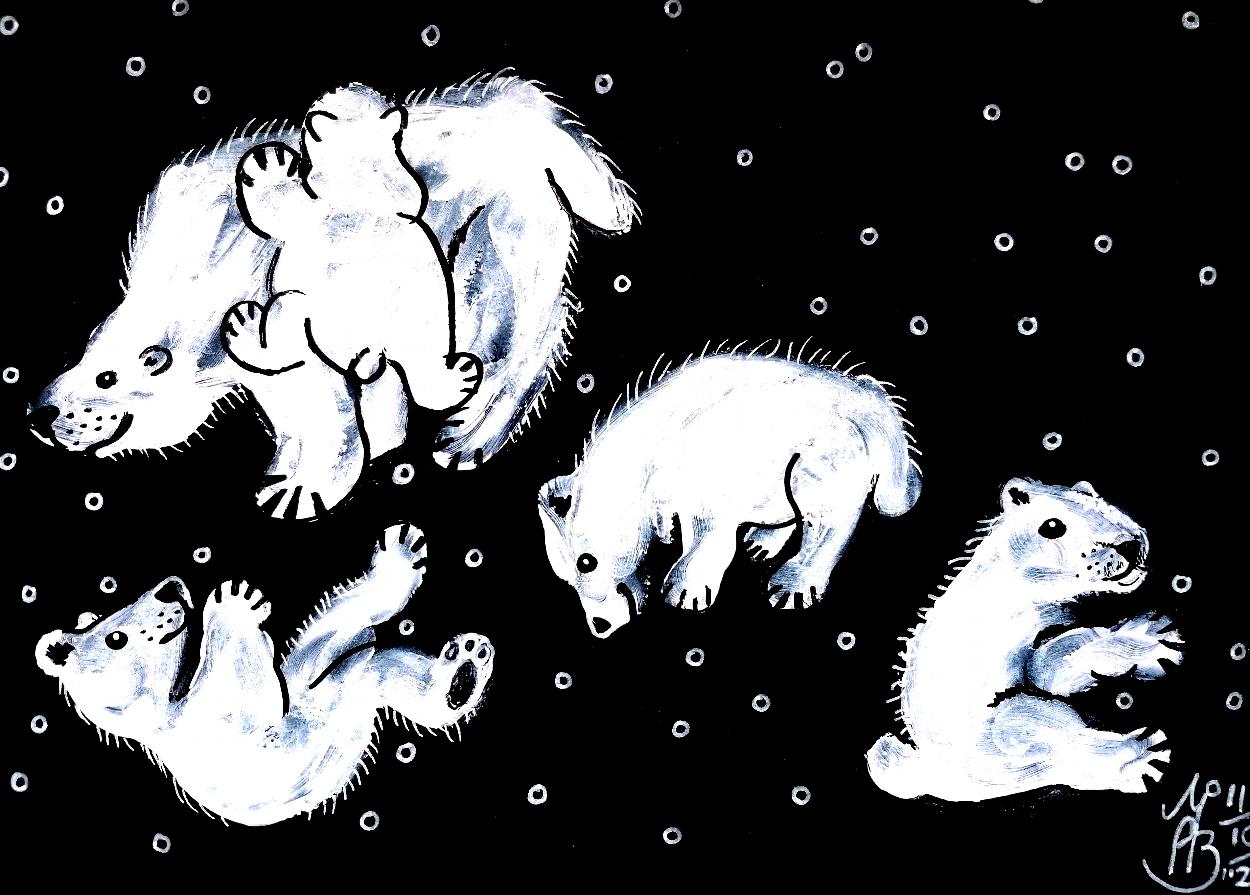



For many years I cherished a dream: painting under the Aurora Borealis in Greenland!
In October 2022 this dream came true. My mother died unexpectedly in August, and I looked after her 247 as she birthed herself into the Embrace of the Ancestors. After that I flew to Sweden to teach Old Norse perspectives on Death & Dying. In September I was back in the UK to drop our youngest son in his new university city (Durham). No longer a daughter, and no longer a full-time mother (of a child living at home), I boarded a flight to Greenland.
I spent one blissful month in my White Heaven. I arrived in time to see the first snow fall after the summer. I watched Inuit children make snowmen and dance on thin ice. I divided my days between hiking and painting. The mornings were dedicated to exploring the mountains and the coastline. The afternoons were for painting. I embarked on a deep dive into Inuit cosmology, enriched by trips to the local museum in Sisimiut (the second largest "city" in Greenland, after Nuuk).

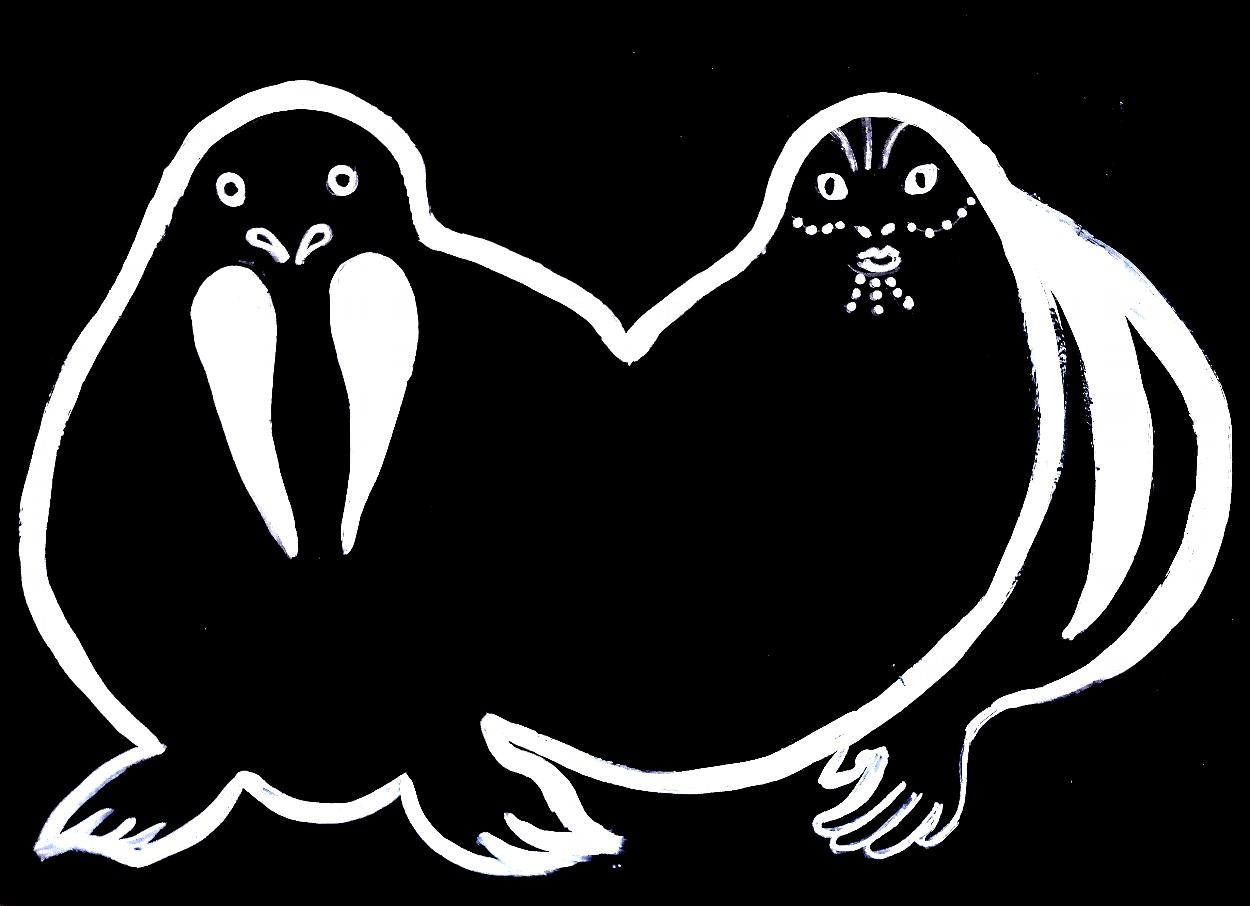


On this page you will see photographs taken during my month in Greenland and also artwork created on location. I wrote a series of 31 daily posts from Greenland on Facebook. I will bundle those into a book and hopefully (time allowing) publish that in 2023.However, while following my bliss, a larger issue moved into view.
"What causes me particular pain is that the people here no longer practice their ancestral traditions. A lifeline, an umbilical cord to the ancestors, has been severed. The job of preserving information and observations has (largely) fallen to outsiders, for about two centuries now. Thankfully we have the journals of Knud Rasmussen and, in modern times, the writings of e.g. Gretel Ehrlich and John MacDonald (I have made detailed references to their work and quoted them in previous posts).
However, our culture has become intensely aware of the issue of counter-cultural appropriation: taking things from another culture for our own use, without permission from the elders and living members of that culture. We try our hardest not to do that any longer. The indigenous ancestral spirituality of one culture is not a “smörgåsbord for spiritual tourists from other cultures”! This is my main reason for practicing (and teaching) a Northern European ancestral and indigenous spirituality."




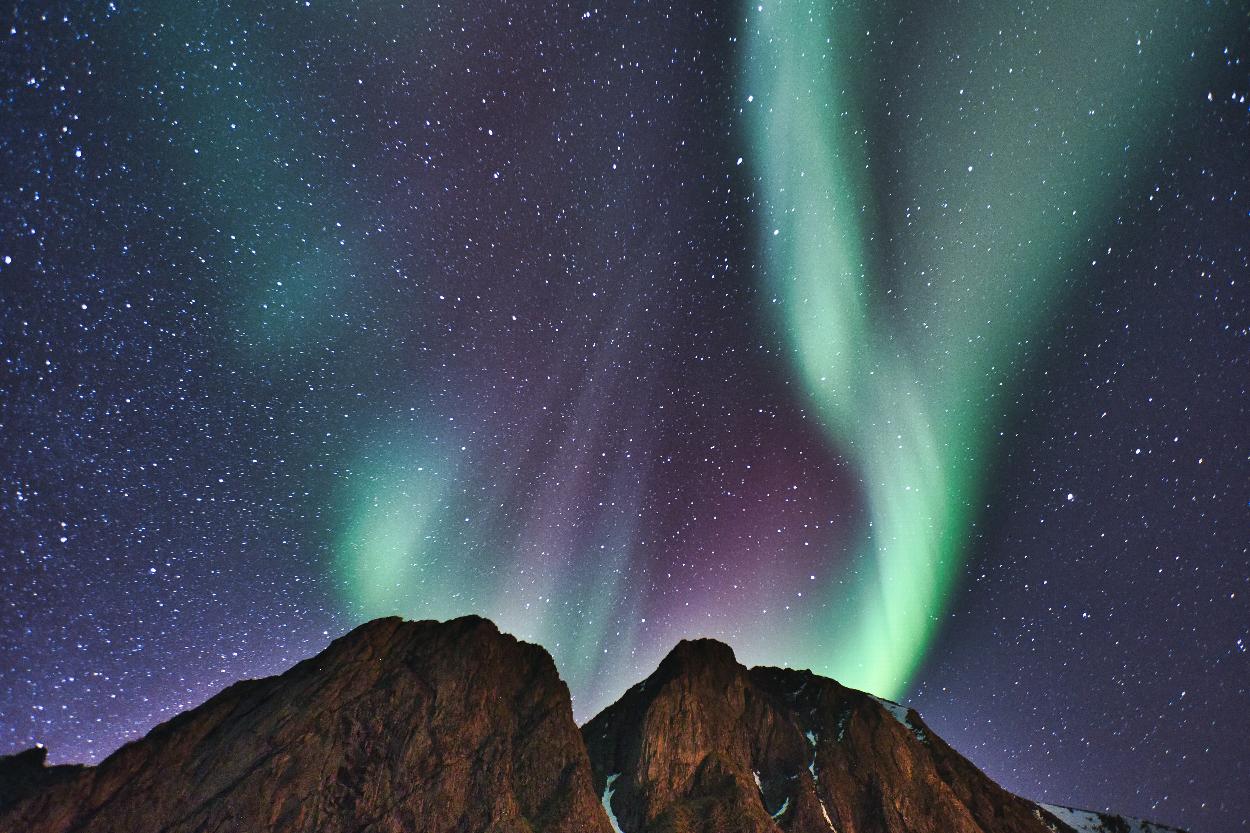
However, between these two (opposing) viewpoints stretches a gap or crevice. Gaps can be both “desolate canyons” and incredibly fertile spaces. Sometimes outsiders see the value of things and, through their writing or art (documentaries, plays, poems etc.) help preserve something and keep it alive in our collective consciousness.
In Kalaallit Nunaat, Snow and Ice became my teachers and I entered into a day-and-night dialogue with ancient Inuit deities, especially Sedna (The Sea Keeper and Mother of all Marine Animals) and Sila (Weather/Consciousness/Breath/Spirit/Cosmos).
The Inuit deities are feeling neglected. They told me so explicitly. They came to me on the seashore and in the mountains. We need to realize that they represent some of the most formidable forces on our planet (and beyond). A shaman appeasing Sedna (The Sea Keeper) could literally make the difference between feast and famine. And Sila, weather/consciousness/spirit, in her harshest manifestation kills through exposure, blizzards, falling through ice etc.
My ultimate point is that powerful ancient deities dropping into oblivion is going to have an effect on climate, weather systems and the local food supply situation (for a moment forget about Denmark flying in Danish products at astronomical expense).

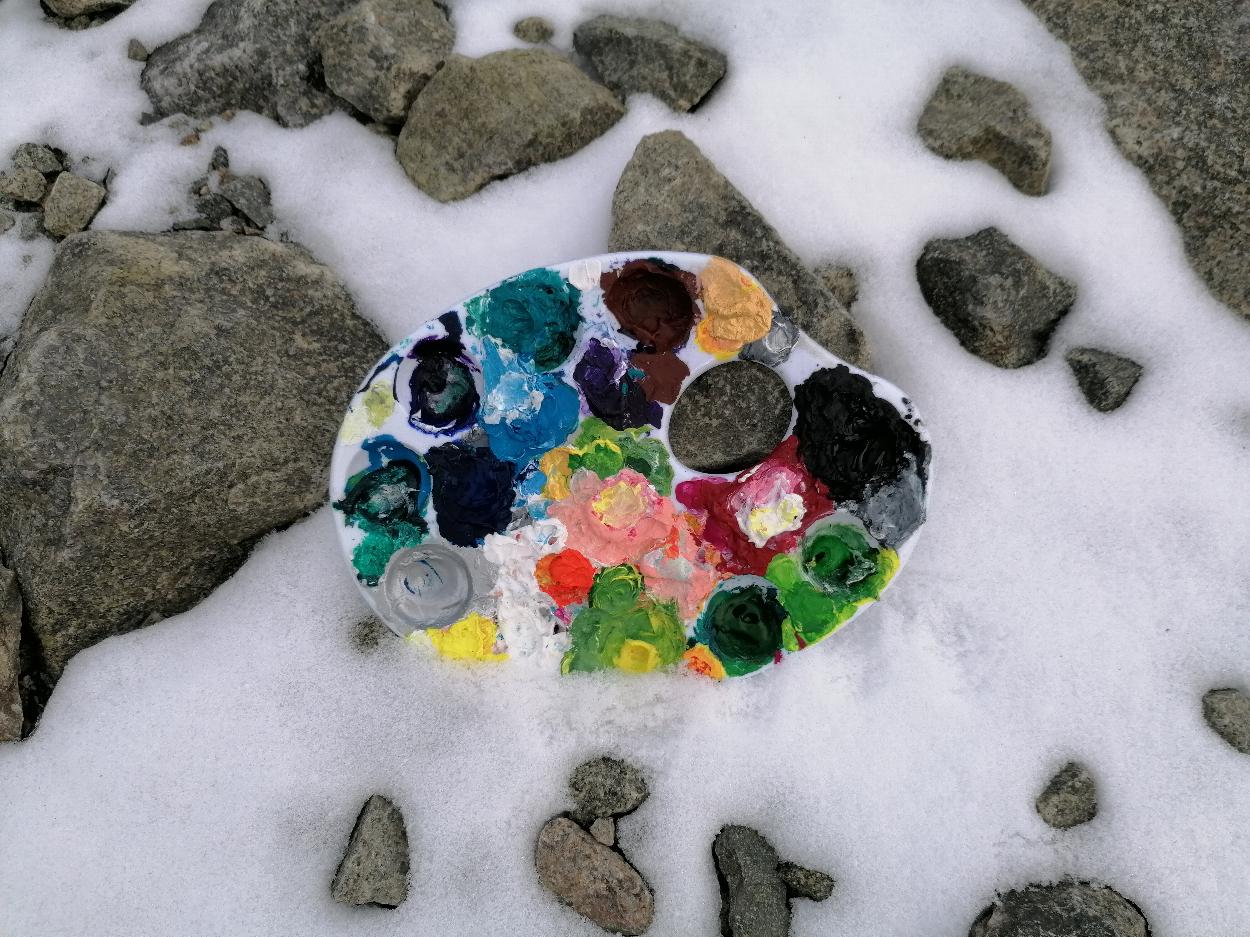

These deities exist, no matter whether human beings believe in them or not! Forgotten Gods become dangerous forces indeed (I have written at length about this in my third book: Medicine of the Imagination!)
Over a period of about two centuries the Inuit became Christianized. Initially this was a very alien way of thinking for them. They observed many rules, traditions and taboos in order to not anger the deities I just mentioned. When they were introduced to European timekeeping (clocks and watches) and to one omniscient God who demanded one day of complete rest out of seven, they (eventually) came around to thinking that there was a certain convenience to that. Resting on Sundays absolved them from observing other taboos and sacrifices on other days. They were also told that the Christian God was loving and compassionate. That was attractive to people living on the jagged razor edge between Life and Death. Qilak (the Inuit word for sky) came to mean Christian Heaven.
EHRLICH QUOTE



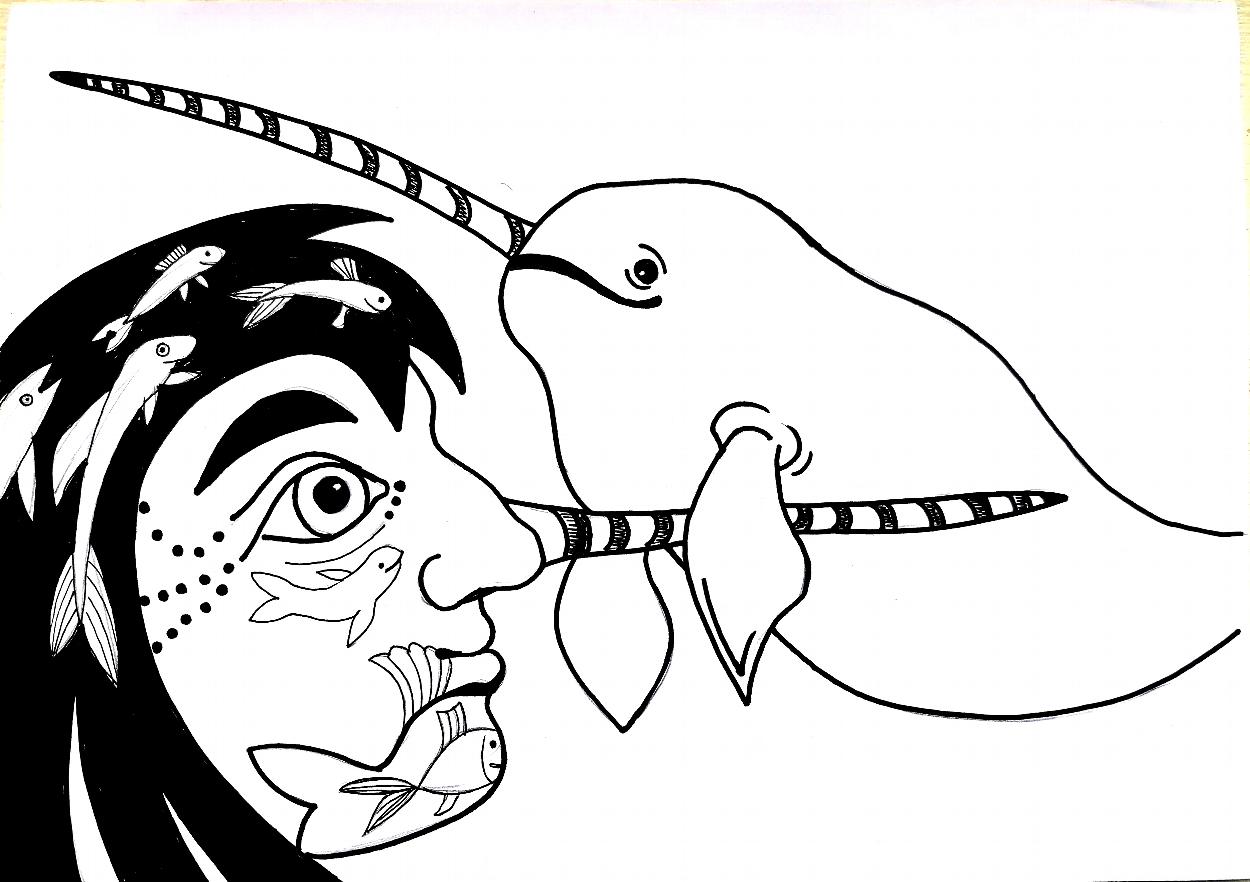



Did you know that the proper name of Greenland is Kalaallit Nunaat? (And the double “ll” is pronounced as “ss”, so phonetically it becomes “Kalaasseet Noonaht”).
Erik the Red, a notorious Viking (and murderer) from Iceland gave Greenland its name, around the year 1000, in the hope of attracting more settlers.
Today Greenland is an independent state, belonging to the Kingdom of Denmark. Meaning that most communications run in Danish (which has been a "crash course immersion" for me, I am used to Swedish!) All travel from Europe runs through Copenhagen. In Summer there are some flights from Baffin Island (in Arctic Canada) to Greenland.
However, Greenland was not always under 2 miles of ice... 2.5 million years ago it was actually green!